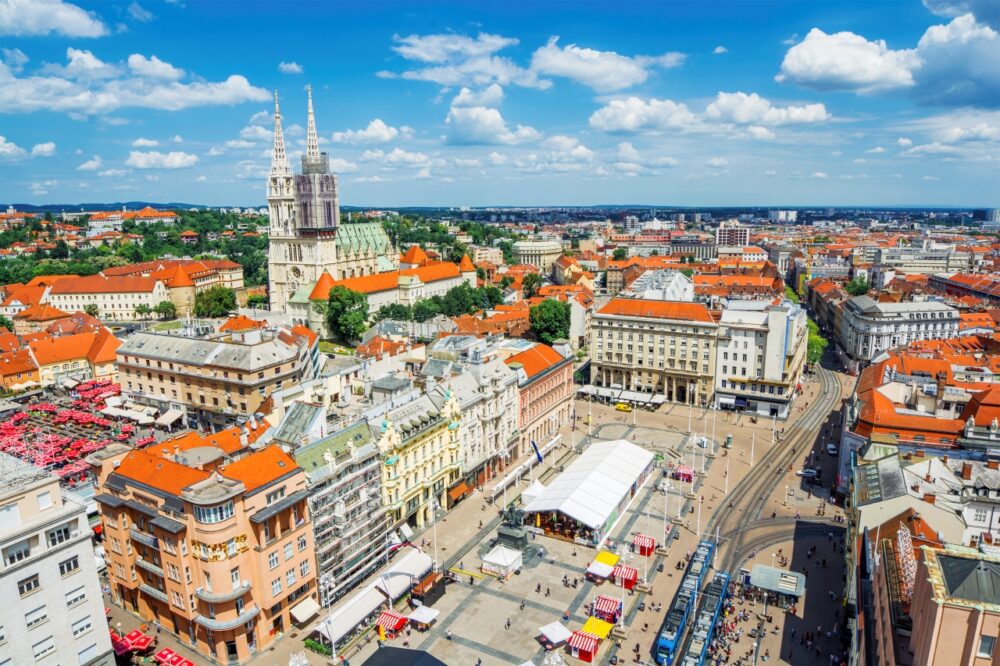
Is Zagreb worth visiting? In my opinion, it’s a city that often flies under the radar but deserves far more attention. When I first arrived in Zagreb, I was surprised by its laid-back charm, vibrant street life, and fascinating mix of old and new. Walking through its cobbled Upper Town and bustling squares, I quickly realised that this Croatian capital has a lot more to offer than most travellers expect.
Located in the heart of Croatia, Zagreb is a city where historic architecture meets a modern creative vibe. Known for its colourful markets, quirky museums, and lively café culture, Zagreb is a destination that rewards exploration. Whether you’re admiring the iconic St. Mark’s Church, taking a stroll through Maksimir Park, or learning about the city’s history at the Museum of Broken Relationships, there’s no shortage of unique experiences. But is Zagreb worth visiting for you?
In this blog post, we’ll explore the top 10 reasons why Zagreb should be on your travel list, from its cultural highlights to its hidden gems. Plus, we’ll share practical travel tips to help you make the most of your visit. Keep reading, and you’ll see why Zagreb might just be Croatia’s most underrated destination.
Table of Contents
Pros – Reasons You Should Visit Zagreb
1. A Lively Capital That Blends History and Modern Energy
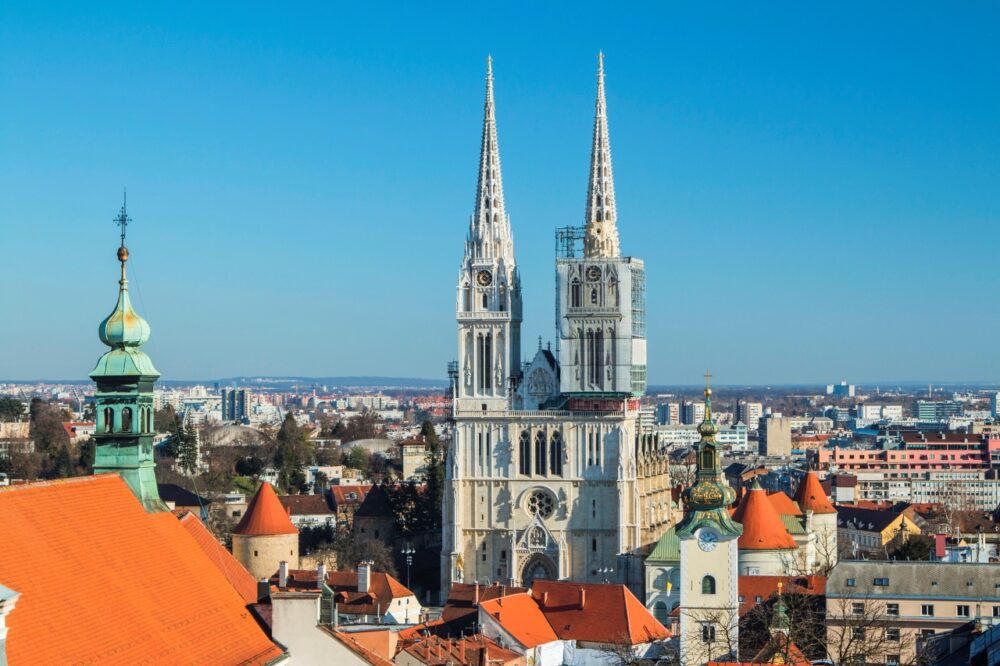
Zagreb is often overshadowed by Croatia’s coastal destinations, but it’s a fascinating city that offers a perfect mix of history, culture, and modern vibrancy. The capital combines Austro-Hungarian elegance with a youthful, energetic atmosphere, thanks to its student population and thriving café culture.
I found that Zagreb has a unique charm that sets it apart from other European capitals. The city is big enough to have plenty to see and do but small enough to feel intimate and easy to explore. Walking through its streets, I came across grand historic buildings, colorful street art, and lively squares filled with locals going about their day. It felt like a place that wasn’t just catering to tourists but had its own distinct character.
2. A Beautiful and Walkable Historic Center
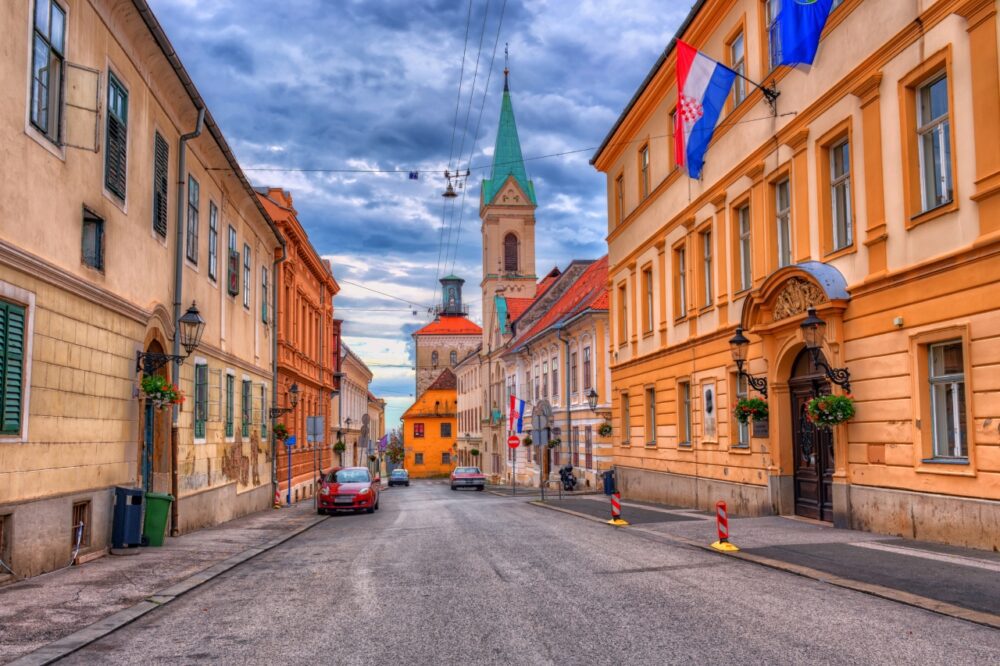
Zagreb’s city center is divided into two main parts: the Upper Town (Gornji Grad) and the Lower Town (Donji Grad). The Upper Town is a charming historic district with cobbled streets, medieval buildings, and stunning viewpoints, while the Lower Town is more modern, with wide boulevards, elegant squares, and beautiful parks.
I spent an afternoon wandering through the Upper Town, where I discovered landmarks like St. Mark’s Church with its colorful tiled roof, the historic Stone Gate, and the Lotrščak Tower, which still fires a cannon every day at noon. The Lower Town felt completely different—more like Vienna or Budapest—with grand 19th-century buildings and well-manicured gardens. The contrast between the two areas makes Zagreb feel like two cities in one.
3. A Vibrant Café Culture That Rivals Any European City
Café culture is a huge part of life in Zagreb, and the city’s cafés are not just places to grab a quick coffee—they’re social hubs where people gather, chat, and enjoy the moment. The main area for café life is Tkalčićeva Street, a lively pedestrian street lined with coffee shops, bars, and restaurants.
I quickly realized that ordering a coffee in Zagreb is an experience in itself. Unlike in some cities where people rush in and out of cafés, here, locals take their time, sitting for hours over a single espresso or macchiato. I joined in on this relaxed tradition, sipping coffee while watching the world go by. If you enjoy the slow-paced café culture of places like Italy or France, Zagreb’s coffee scene will feel instantly familiar and inviting.
4. Unique Museums That Offer Something Different
Zagreb is home to some of the most interesting and unusual museums in Europe. While the city has its share of traditional art galleries and history museums, it’s also known for its quirky and creative exhibits. The most famous of these is the Museum of Broken Relationships, which displays objects donated by people from around the world, each representing a past relationship and its story.
I visited this museum expecting it to be a bit gimmicky, but it turned out to be one of the most touching and thought-provoking experiences of my trip. Each object—from love letters to personal belongings—came with a story that ranged from funny to heartbreaking. Other fascinating museums include the Museum of Illusions and the quirky 80s Museum, which transports visitors back to life in socialist Yugoslavia.
5. A Budget-Friendly European Capital
Compared to many other European capitals, Zagreb is very affordable. Accommodation, food, public transport, and attractions are all reasonably priced, making it an excellent choice for budget travelers. While cities like Dubrovnik and Split have seen prices rise due to mass tourism, Zagreb remains a place where you can enjoy a great meal or a high-quality experience without spending a fortune.
I stayed in a comfortable central guesthouse for a fraction of what I would have paid in Western Europe. Even dining out was affordable—a full meal at a traditional restaurant cost less than a basic sandwich in some other European capitals. If you’re looking for a city that offers great value for money, Zagreb is a fantastic option.
6. Lush Parks and Green Spaces Throughout the City
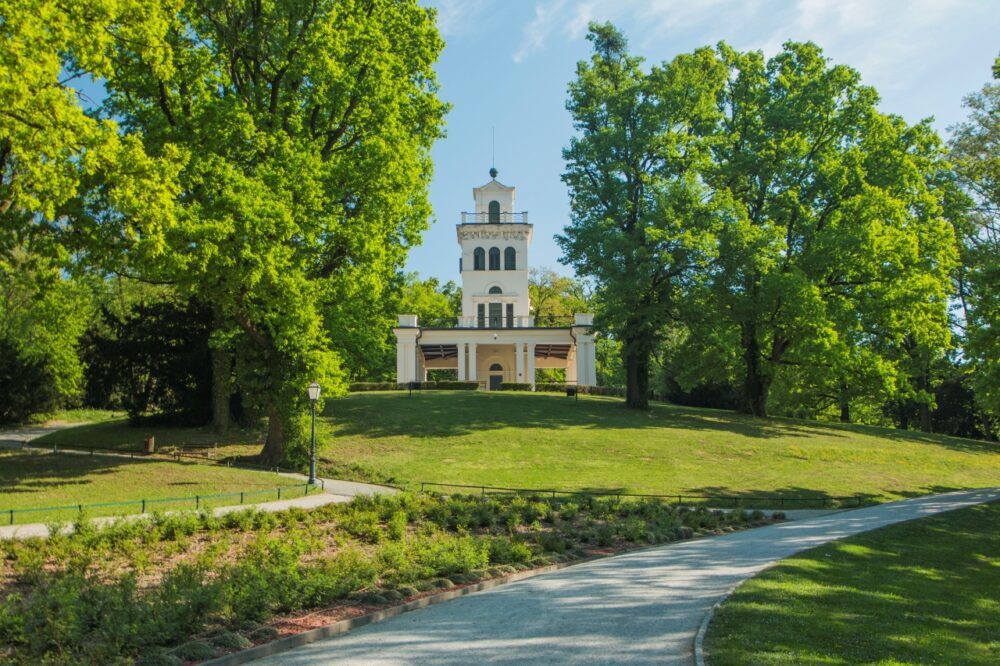
Zagreb is one of the greenest capitals in Europe, with plenty of parks, tree-lined streets, and outdoor spaces where people can relax. The Lower Town is particularly known for its “Green Horseshoe,” a series of beautifully designed parks that connect many of the city’s major landmarks.
I spent a peaceful morning in Zrinjevac Park, one of the most beautiful green spaces in the city, where locals were reading on benches, playing music, and enjoying the fresh air. If you want an escape from the urban bustle, Maksimir Park is another great option—it’s a massive forested park with walking trails, lakes, and even a small zoo. Zagreb proves that big cities don’t have to feel overwhelming or crowded.
7. A Great Food Scene with Delicious Traditional Dishes
Croatian cuisine is a mix of Central European and Mediterranean influences, and Zagreb has its own distinct food culture. Traditional dishes like štrukli (a baked pastry filled with cheese and cream), Zagrebački odrezak (a schnitzel-style stuffed meat dish), and fresh grilled meats can be found in restaurants throughout the city.
I had an amazing meal at a local tavern where I tried štrukli for the first time. The warm, cheesy pastry was incredibly comforting, and it paired perfectly with a glass of local wine. Another great thing about Zagreb’s food scene is its variety—whether you’re looking for traditional Balkan barbecue, Italian-inspired pasta dishes, or fresh pastries from a local bakery, the city has something for every taste.
8. A Lively Nightlife with Something for Everyone
Zagreb has a surprisingly vibrant nightlife scene, with something for every type of traveler. Whether you prefer relaxed wine bars, underground jazz clubs, or lively nightclubs, the city has plenty of options to choose from. The nightlife is concentrated in two main areas—Tkalčićeva Street, which has an energetic but laid-back atmosphere, and the more alternative scene in the Medika district.
I spent an evening hopping between different bars, starting with a wine tasting at a cozy cellar before heading to a lively craft beer bar. Later, I checked out a live music venue where a local band was playing, and the energy in the room was infectious. Unlike some tourist-heavy nightlife destinations, Zagreb’s scene feels more local and authentic.
9. Easy Access to Day Trips and Nature
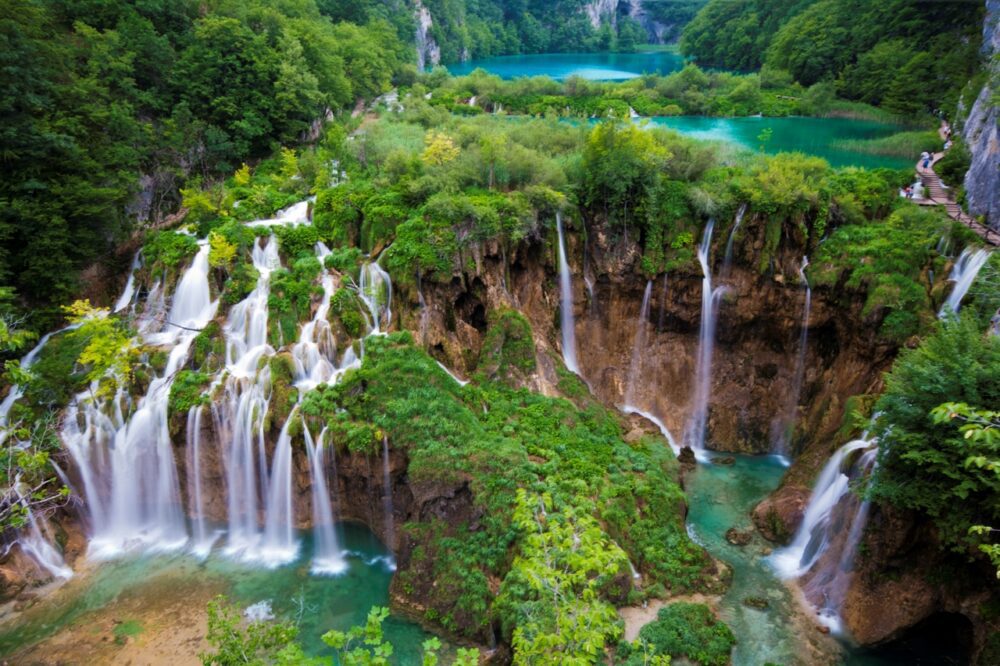
Zagreb is in a great location for exploring more of Croatia and even neighboring countries. Within an hour or two, you can visit places like Plitvice Lakes National Park, the charming baroque town of Varaždin, or even take a short trip across the border to Slovenia.
I took a day trip to Plitvice Lakes, and it was one of the highlights of my visit. The cascading waterfalls, crystal-clear lakes, and lush forests were breathtaking. If you’re staying in Zagreb for a few days, adding a day trip to a nearby natural or cultural site is highly recommended.
10. A More Authentic and Less Touristy Side of Croatia
While Croatia’s coastal cities are stunning, they can also be crowded, expensive, and heavily focused on tourism. Zagreb, on the other hand, offers a more authentic look at Croatian life, where you can interact with locals, experience real café culture, and explore at your own pace without feeling rushed.
I appreciated how Zagreb felt like a city that belonged to its residents rather than just catering to visitors. I could sit in a park, wander through a local market, or enjoy a traditional meal without feeling like everything was designed for tourists. If you want to experience Croatia beyond its beaches, Zagreb is the perfect place to do it.
Cons – Things You Should Consider When Visiting Zagreb
1. Zagreb Lacks the Wow Factor of Croatia’s Coastal Cities
While Zagreb has plenty of charm, it doesn’t have the same breathtaking appeal as Croatia’s famous coastal destinations like Dubrovnik or Split. There are no dramatic sea views, historic city walls overlooking the Adriatic, or island-hopping adventures. Travelers who come to Croatia expecting postcard-perfect coastal scenery may find Zagreb less visually striking in comparison.
I arrived in Zagreb after spending time on the Dalmatian coast, and I immediately noticed the difference. Instead of shimmering blue waters and medieval fortresses by the sea, Zagreb offers an urban setting with a mix of Austro-Hungarian architecture, modern development, and tree-lined avenues. While the city is beautiful in its own way, it lacks the kind of jaw-dropping landscapes that make Croatia famous. If your main reason for visiting Croatia is the coast, Zagreb might not be a priority.
2. The City Feels Quiet in the Summer When Locals Leave
Zagreb is a university city with a large student population, which gives it a lively and dynamic energy for most of the year. However, during the peak summer months, many locals head to the coast for their vacations, leaving parts of the city feeling noticeably quieter. Some restaurants and cafés even close for a few weeks in August, and the usual buzz of the city is noticeably reduced.
I visited in mid-August, and while the city was still pleasant, I could tell that many of the usual residents were gone. Some streets that I had heard were normally lively felt much calmer, and a few recommended restaurants were temporarily closed. While Zagreb still has enough going on to keep visitors entertained in summer, it doesn’t have the same vibrant atmosphere as in spring or autumn when locals are more present.
3. The Weather Can Be Extreme, Both in Summer and Winter
Zagreb experiences a continental climate, which means hot summers and cold winters. Unlike Croatia’s coastal cities, which enjoy a Mediterranean climate with milder temperatures year-round, Zagreb can get uncomfortably warm in July and August, with temperatures often exceeding 35°C (95°F). Winters, on the other hand, can be quite cold, with occasional snowfall and freezing temperatures.
I was there on a particularly hot summer day, and sightseeing in the midday heat was exhausting. The Old Town, with its cobbled streets and hills, became much harder to explore when temperatures were soaring. In winter, the cold and early sunsets can make the city feel less inviting, especially for those who prefer milder weather. If you’re sensitive to extreme temperatures, visiting in spring or early autumn is the best option.
4. Public Transport is Limited Compared to Other European Capitals
Zagreb has a decent public transport system, mainly consisting of trams and buses, but it’s not as extensive or efficient as in some larger European cities. There’s no metro system, and while the trams are useful for getting around the city center, some areas are less well connected. The transport network can also feel outdated, with older trams that don’t always run on schedule.
I found the trams easy to use but noticed that some routes were infrequent, and during peak hours, they could get quite crowded. There were also occasional delays, which made getting across the city slower than expected. While Zagreb’s size makes it quite walkable, those relying on public transport might find it less convenient than in places like Vienna or Budapest.
5. The City Still Shows Signs of Economic Challenges
Zagreb is developing quickly, but some areas still reflect the economic struggles Croatia has faced in recent decades. While the city center is well-maintained, certain neighborhoods and older buildings look a bit worn down, with faded facades and signs of neglect. Compared to Croatia’s more polished tourist destinations, Zagreb feels less polished in some parts.
Walking just a few blocks outside the main tourist areas, I noticed buildings with peeling paint, abandoned storefronts, and graffiti-covered walls. While this didn’t make the city feel unsafe, it did contrast with the elegant Austro-Hungarian architecture in the more central parts of town. This doesn’t take away from Zagreb’s overall charm, but visitors expecting a pristine, polished European capital might be surprised by the contrasts.
When to Visit Zagreb
The best times to visit Zagreb are spring (April to June) and autumn (September to October), when the weather is mild, the parks are vibrant, and the city feels lively without the heat and crowds of summer. During December, Zagreb becomes a winter wonderland, with its Christmas markets consistently ranked among the best in Europe, filling the squares with festive lights, mulled wine, and traditional treats. Summer (July and August) can be hot and sees locals heading to the coast, but if you’re in town, it’s a great time to experience Zagreb’s outdoor cafe culture and seasonal events.
How to Get to Zagreb
Franjo Tuđman Airport (ZAG) is Zagreb’s main international airport, located around 17 kilometres from the city centre. Airlines like Croatia Airlines, Lufthansa, and Austrian Airlines offer frequent flights from across Europe. From the airport, you can catch a quick and affordable shuttle bus to the main bus station in central Zagreb, or opt for a taxi or rideshare service, which takes about 30 minutes. Zagreb is also well-connected by train and bus to cities like Budapest, Ljubljana, and Vienna, making it an accessible destination within Central Europe.
Where to Stay in Zagreb
Zagreb’s accommodation scene has something for every budget, spread across distinct areas:
- Luxury: Upper Town (Gornji Grad) – This historic area is close to landmarks like St. Mark’s Church and the Museum of Broken Relationships. Hotel Esplanade Zagreb and Amadria Park Hotel Capital offer upscale stays in classic surroundings.
- Mid-range: Lower Town (Donji Grad) – Known for its cafes, shops, and leafy parks, this area is central and vibrant. Look into Hotel Dubrovnik and Canopy by Hilton Zagreb for stylish stays at a reasonable price.
- Budget: Kvaternik Square – A bit outside the city centre but well-connected by tram, this neighbourhood has budget-friendly spots like Funk Lounge Hostel and Whole Wide World Hostel that offer affordable and social stays.
Getting Around Zagreb
Zagreb is a walkable city, especially around the Upper Town and Lower Town, where most attractions are within easy reach. For longer trips, Zagreb’s ZET tram network is efficient and covers the entire city, with affordable single tickets and day passes available. Zagreb also has a bike-sharing system, Nextbike, which makes it easy to rent bikes around the city. If you’re up for a different view, the Zagreb Funicular connects the Lower and Upper Towns in just a minute, making it the shortest public transport funicular in the world—and a fun way to see the city’s hilltop sights.
How Long to Spend in Zagreb
Two to three days is ideal for experiencing Zagreb’s main highlights, including Ban Jelačić Square, Dolac Market, and Mirogoj Cemetery. With three days, you’ll have time to explore both the Upper and Lower Towns, sample Croatian cuisine, and dive into unique museums like the Museum of Broken Relationships. If you have a bit longer, consider a day trip to Plitvice Lakes National Park or Samobor, a quaint town known for its picturesque streets and traditional pastries.
Conclusion
So, is Zagreb worth visiting? Absolutely! With its rich history, vibrant cultural scene, and welcoming atmosphere, Zagreb offers a side of Croatia that’s completely different from its coastal hotspots. The city’s unique attractions, like the Museum of Broken Relationships and the lively Dolac Market, make it a destination worth exploring. While it doesn’t have the beaches of Dubrovnik or Split, its charm lies in its authenticity and relaxed pace. If you’re ready to discover a new side of Croatia, start planning your trip to Zagreb—you won’t regret it!
